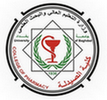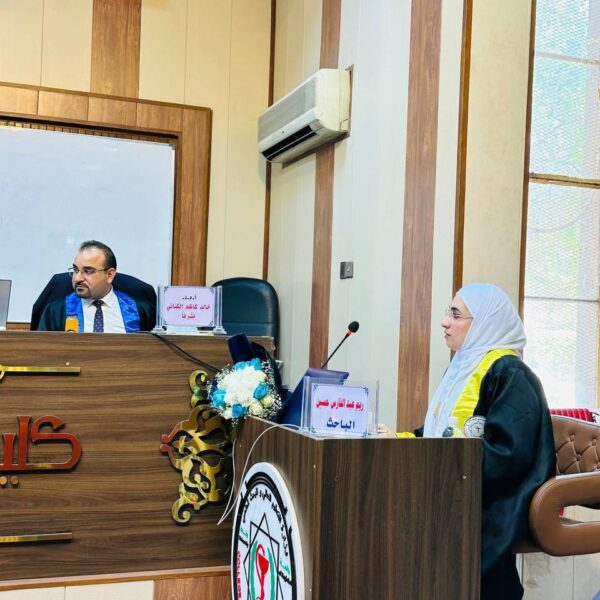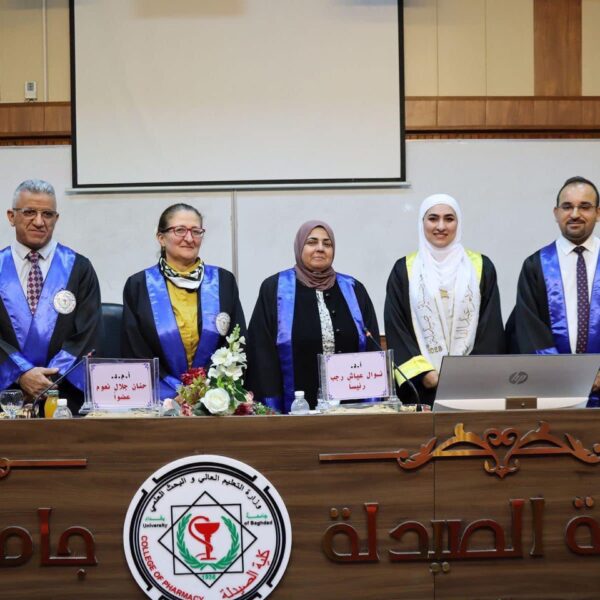The Faculty of Pharmacy discussed the Master’s Degree thesis, tagged” The Formulation and Characterization of Prednisolone Acetate as Ocular Bioadhesive Microemulgel ” by Reem Abdualfaris Hussein Al-Rubaye and the supervisor, Assist. Prof. Dr. Khalid Kadhem Al-Kinani in the Department of Pharmaceutics.The thesis aimed to prepare and evaluate an ocular microemulgel of prednisolone acetate as a new dosage form for enhancing drug permeation, residence time, and consequently patient compliance.Prednisolone acetate (PA) is a synthetic version of the natural corticosteroid hormone as an ester form of prednisolone which is practically insoluble in water belongs to class II biopharmaceutical classification system (BCS II). Prednisolone acetate is used topically as an ophthalmic suspension or ointment to treat many inflammatory ocular conditions. However, PA absorption from these dosage forms is highly variable causing poor dose accuracy and blurred vision. The objectives of this work were to formulate and evaluate an ocular microemulgel of PA as a new dosage form to increase residence time, greater corneal permeation, and enhance patient compliance and treatment efficacy. The selection of suitable components (oil phase, surfactant, and co-surfactant (Smix)) for microemulsion (ME) preparation was based on the solubility of PA in these components. Twenty-four PA-loaded ME (0.5%w/w) formulas were prepared using oleic acid (OA) and isopropyl myristate (IPM) as oil phase in a ratio of (1:1); Tween 80 (Tw80), Labrasol, and Cremophore EL as surfactant; ethanol (EtOH), polyethylene glycol 400, propylene glycol (PG), and transcutol P as co-surfactant; and phosphate buffer saline (PBS) pH 7.4 as the aqueous phase. Different Smix ratios (1:1), (1:2) and (2:1) were used and aqueous titration method was used to construct pseudoternary phase diagrams to determine microemulsion region. Thermodynamic stability tests were applied for the stability evaluation of the prepared MEs, particle size measurement, polydispersity index (PDI), percent of light transmittance (T%), drug content, viscosity, pH measurement were also carried out. Among the prepared formulations, those with particle size less than 200 nm were chosen for further characterization studies. Observations of the prepared microemulsion showed that it had a clear and transparent yellowish color and stable in thermodynamic stability tests. Formulation F9, which is composed of (10%w/w) OA and IPM (1:1) as an oil phase, (30%w/w) Tw80 as a surfactant, PG:EtOH (1:1) in a ratio (2:1) as cosurfactant, and PBS (60%w/w) gave the most preferred properties ,with particle size of (10.18nm), PDI of (0.2216), zeta potential of (-25,91), T% of (99.38%), drug content of (100±0.16%), pH was (6.72±0.16) and complete drug release after 8h. Microemulsions formulation provide considerably high permeability than the generic eye drops suspension (Optipred®) and better solubility as shown by HPLC test results. Osmolarity 282± 1 mOsm/kg was close to the normal human tears, and did not cause any irritation to the tested animals. Atomic force microscope, TEM, and FESEM of the selected formulas confirmed a spherical homogenous shape with no aggregation with smooth surface. The optimum PA-loaded ME formula (F9) was used for the preparation of eight Microemulgel (MG) formulas using carbopol934, Carbopol 940, hyaluronic acid, and sodium alginate as a gelling agent. The optimum PA-MG (G2) formula, which was prepared using 1% Carbopol 934, showed an optimum appearance, pH (6.56), drug content (99.76%), non-Newtonian pseudo-plastic performance with shear-thinning viscosity, bioadhesive force of (4090.64 dyne/cm2), spreadability of (3.5cm), (97.51) percent release of the drug after 8 h, and ex-vivo permeation enhancement of two folds during 8 h as compared to the control generic ophthalmic ointment. There was no interaction between PA and any other excipient in the formula according to FTIR studies. The stability study was achieved by storing PA formulation at 4, 25, and 40 ºC for 12 weeks after which only minimum change was observed in pH and drug content therefore the formulation stability was confirmed. A conclusion, prednisolone acetate ocular microemulgel is an effective strategy for the enhancement of permeation of PA, and increase residence time which may be considered as promising ocular drug delivery system in the treatment of eye anterior segment inflammation.





